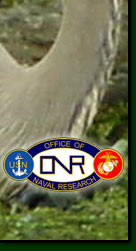Developing
the Poster Graphics
Multimedia Team
The 2001 Multimedia
Team research group has taken quite an interesting research topic
this year. Our research is centered around a collaboration with
another research group entitled Math of the Great Dismal Swamp (MGDS).
Certain aspects of our research are based around their research.
The Great Dismal Swamp Wetlands and Wildlife Refuge is a heavily
forested area of land and water located in Suffolk and Chesapeake,
Virginia. It also stretches to North Carolina in the counties of
Gates, Camden, and Pasquotank. The property has been used to make
the public aware of the essential role that wetlands play in the
coastal plains area. It has also been used for research and educational
purposes. The goal of this year's Multimedia Team is to create an
educational poster for the Dismal Swamp which will attract the attention
of Kindergarten to third graders and make them aware of the swamp's
importance while addressing required mathematics standards.
The final product of our research is to complete a professional
poster for the Dismal Swamp which will attract the attention and
aid in the understanding of the swamp for Kindergarten through third
graders.
Developing the Lesson Plans for the Poster
Mathematics of the Great Dismal Swamp Team
The primary
focus of this research was to make connections between mathematics
and the current ECSU Great Dismal Swamp research projects. These
connections will assist us in developing lesson plans for students
in grades pre-K through grade 2. The Mathematics of the Great Dismal
Swamp Team reviewed results of faculty and student research projects
to identify sources used in the mathematics preparation of children
at this grade level. We then produced educational lessons, which?
incorporated mathematical concepts from the data collected.
We realize the importance of the mathematical developments, which
occur in students in grade pre-k through grade 2. Thus, this project
was designed to build on the curiosity and enthusiasm of children
as it relates to the study of mathematics. Appropriate mathematical
experiences were designed to challenge young children to explore
ideas related to data analysis and probability, measurement, mathematical
connections, algebraic concepts, and numerical operations. The National
Council of Teachers of Mathematics lists these topics and many others
as those which young children should be
exposed to as early as pre-k through grade 2.
The lessons developed have been produced on a poster and will be
submitted to NASA's Earth Science product review committee. The
review criteria and guidelines are available at http://www.strategies.org/ESEReview.html.
The mathematics team worked closely with the multimedia team, whose
research project will produce the image of the swamp to be displayed
on the front of the poster.
|

